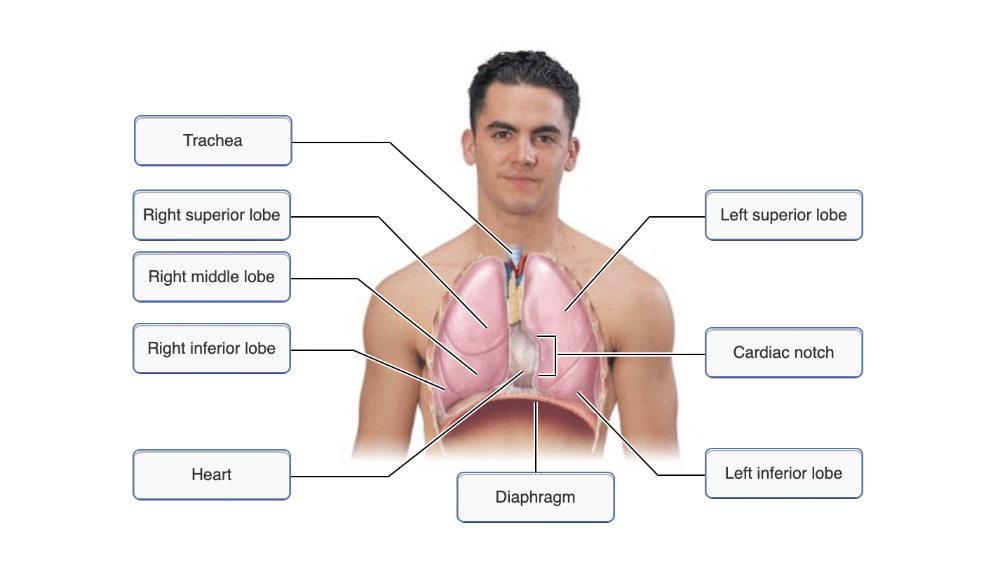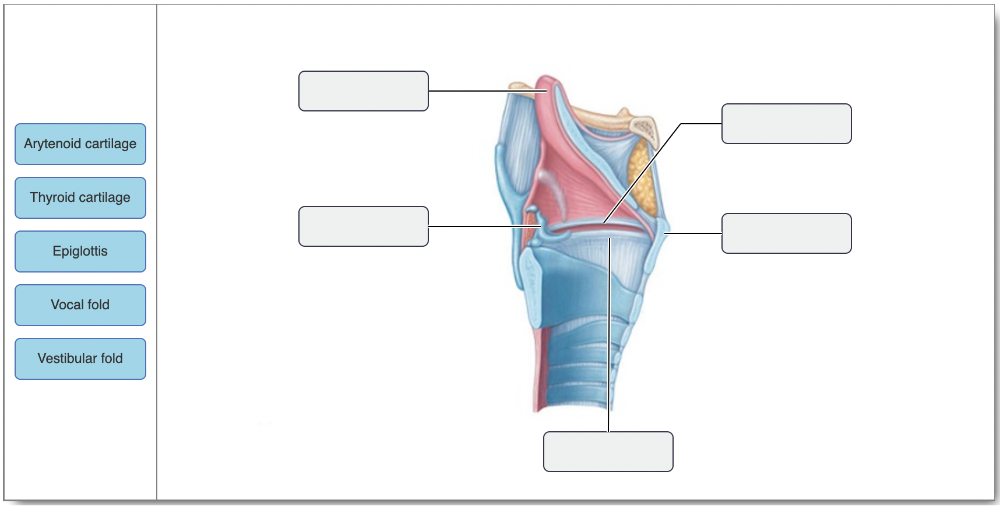
Drag the appropriate labels to their respective targets.
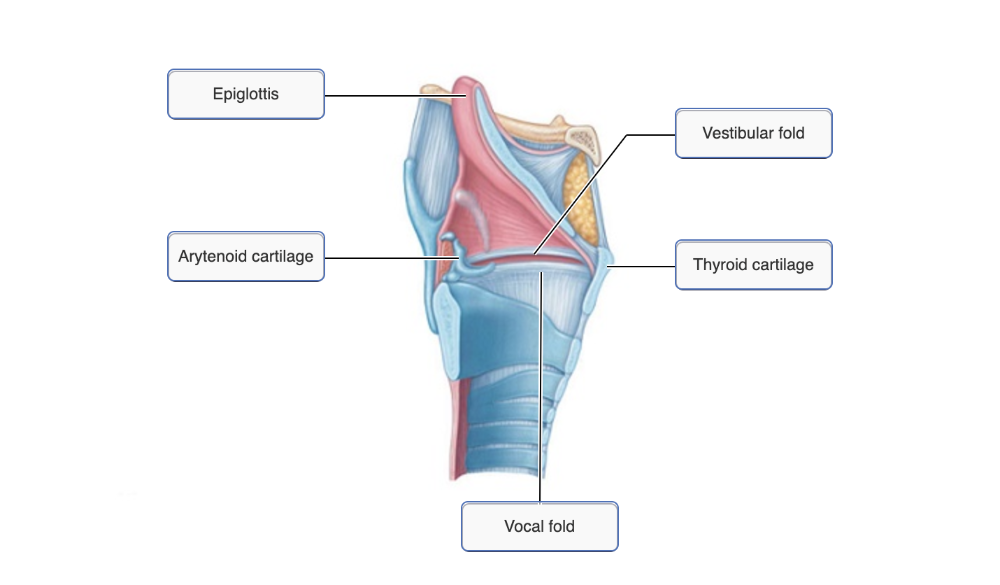
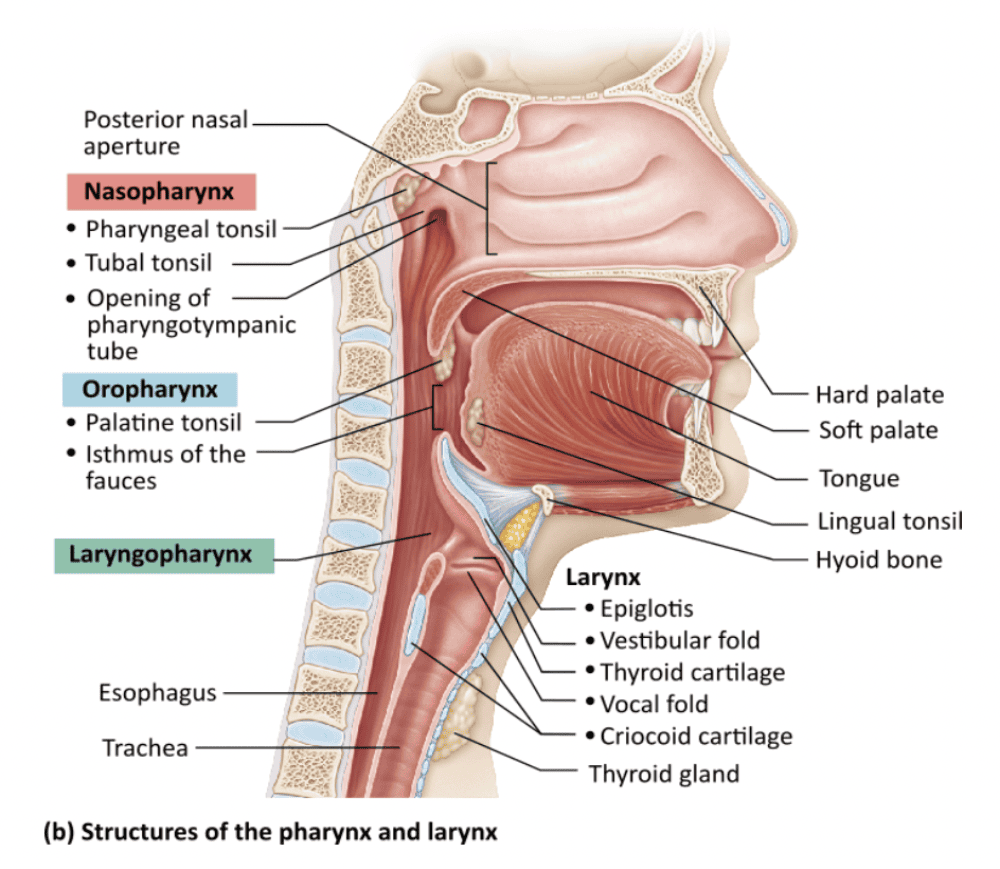
Which of the following regions contains the opening of a canal that equalizes pressure in the middle ear?
- nasopharynx
- laryngopharynx
- oropharynx
- larynx
nasopharynx
Ex.
The opening to the pharyngotympanic tube is in the nasopharynx above the uvula and near the pharyngeal tonsil.
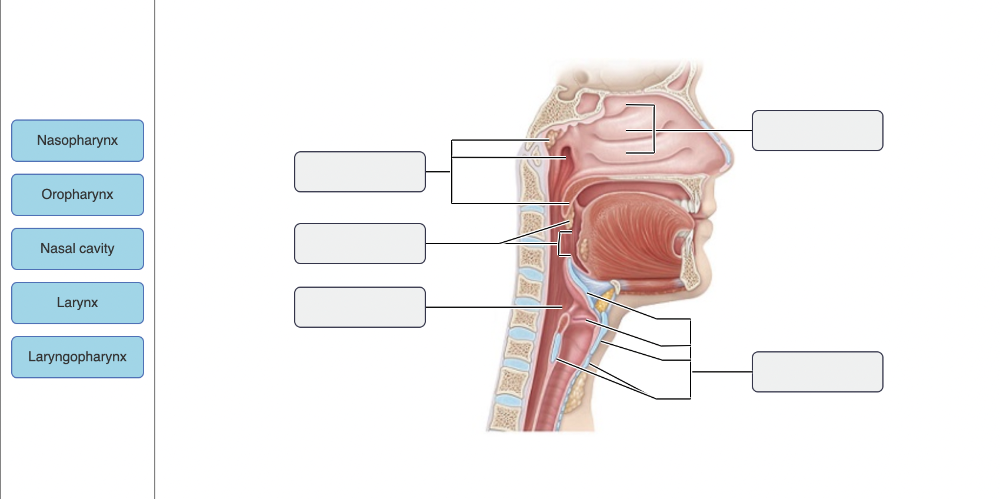
Drag the appropriate labels to their respective targets.
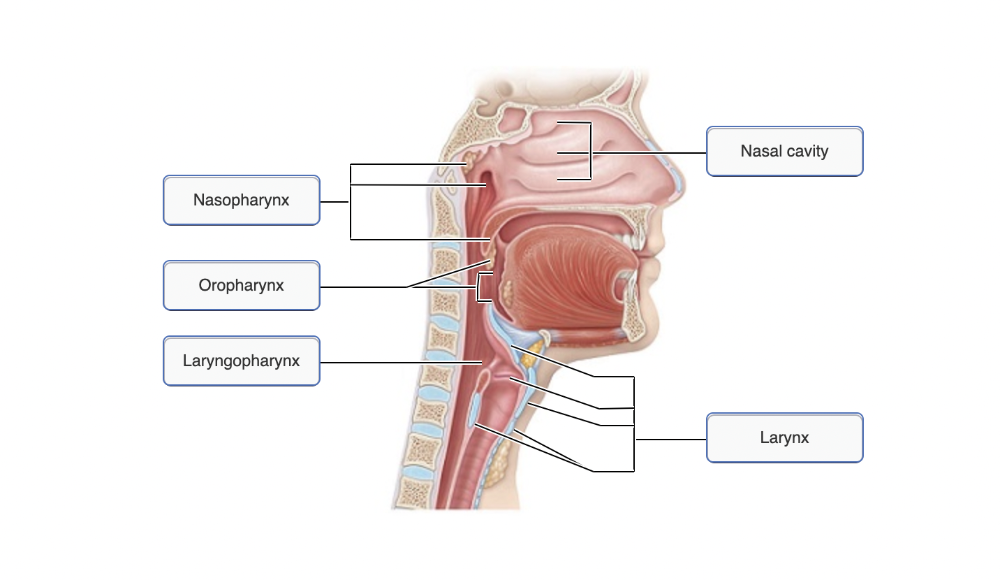
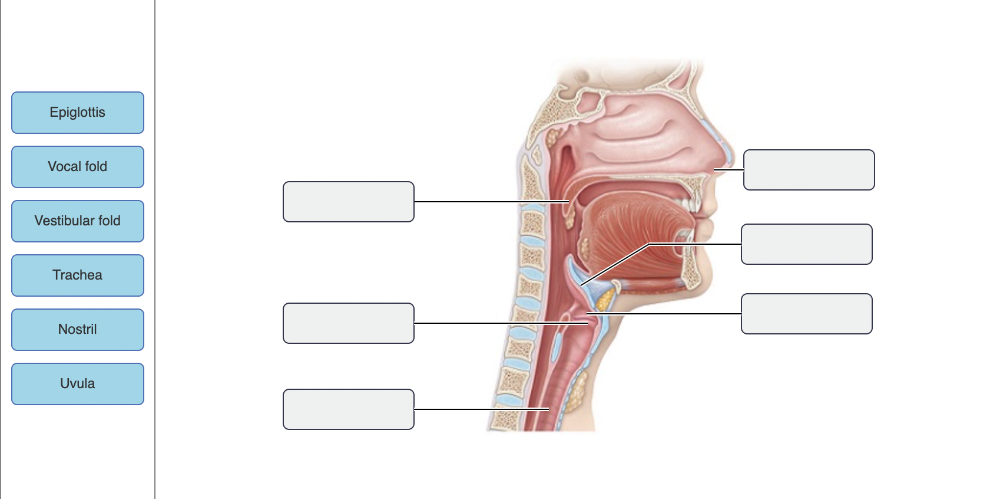
Drag the appropriate labels to their respective targets.
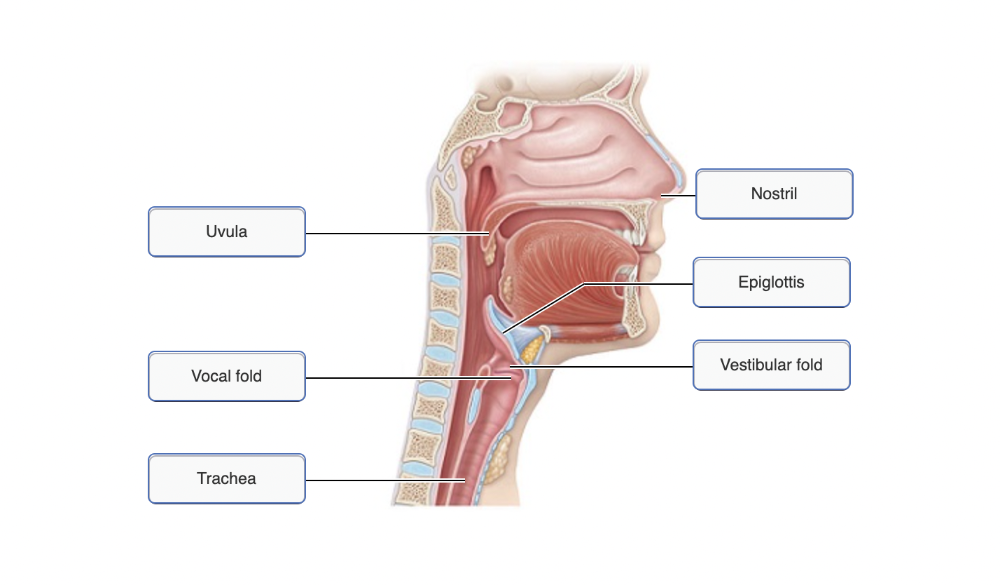
Which of the following observations would only be found in the right lung?
- a horizontal fissure
- two lobes
- an oblique fissure
- a cardiac notch
a horizontal fissure
Ex.
Only the right lung should have a horizontal fissure.
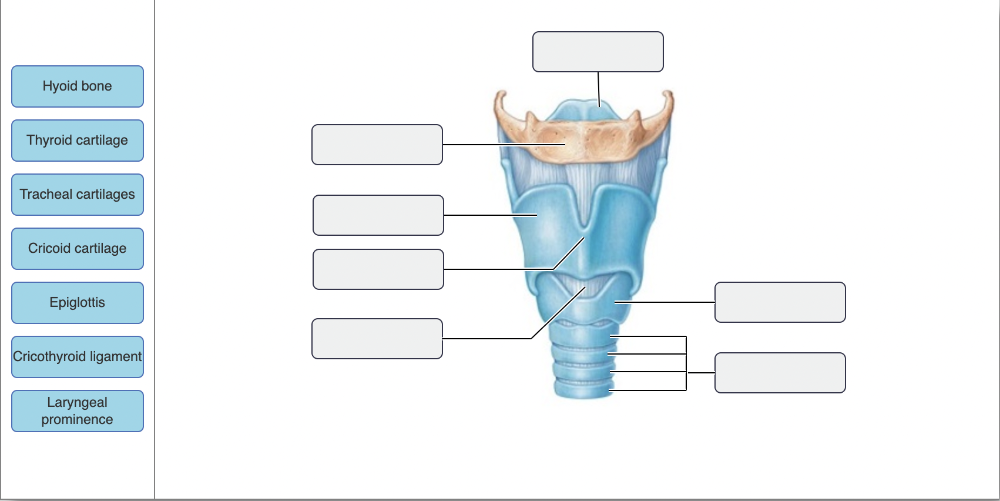
Drag the appropriate labels to their respective targets.
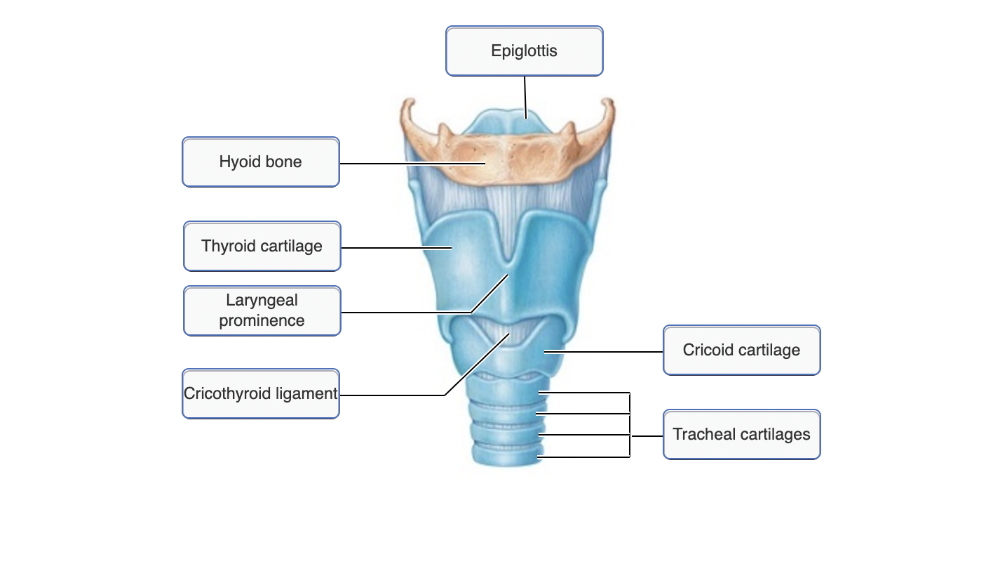
The indentation on the medial surface of each lung through which pulmonary and systemic blood vessels, bronchi, lymphatic vessels, and nerves enter and leave is called the __________.
- apex
- base
- cardiac notch
- hilum
hilum
Ex.
The term hilum applies to any indentation or crack in an organ through which vessels or ducts enter it. The kidneys, lungs, spleen, and ovaries all have hila.
Which of the following is/are part(s) of the respiratory zone structures?
- terminal bronchioles
- trachea
- primary bronchi
- alveoli
alveoli
Ex.
Alveoli are thin-walled air sacs that are the sites of gas exchange. Along with the respiratory bronchioles and alveolar ducts, the alveoli make up the respiratory zone.
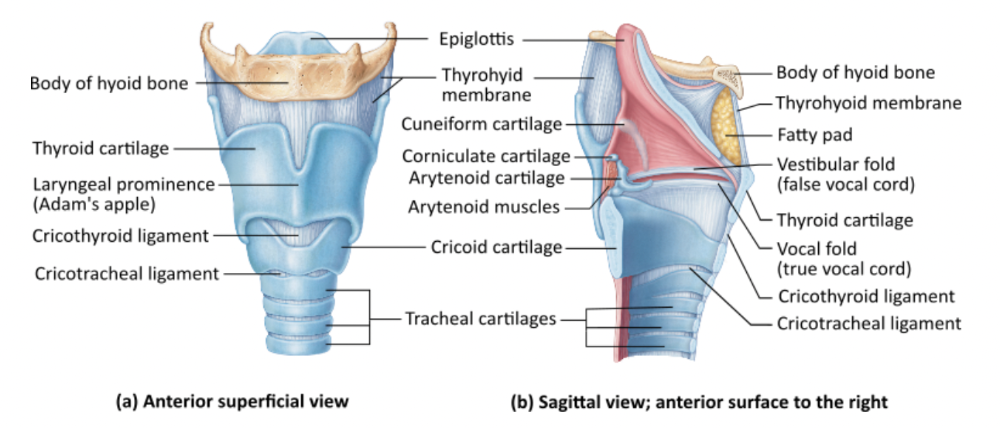
Which of these structures forms a complete ring around the airway?
- thyroid cartilage
- tracheal cartilage
- hyoid bone
- cricoid cartilage
cricoid cartilage
Ex.
The cricoid cartilage makes a complete ring around the airway, stabilizing the glottis, the vocal cords, and the epiglottis.
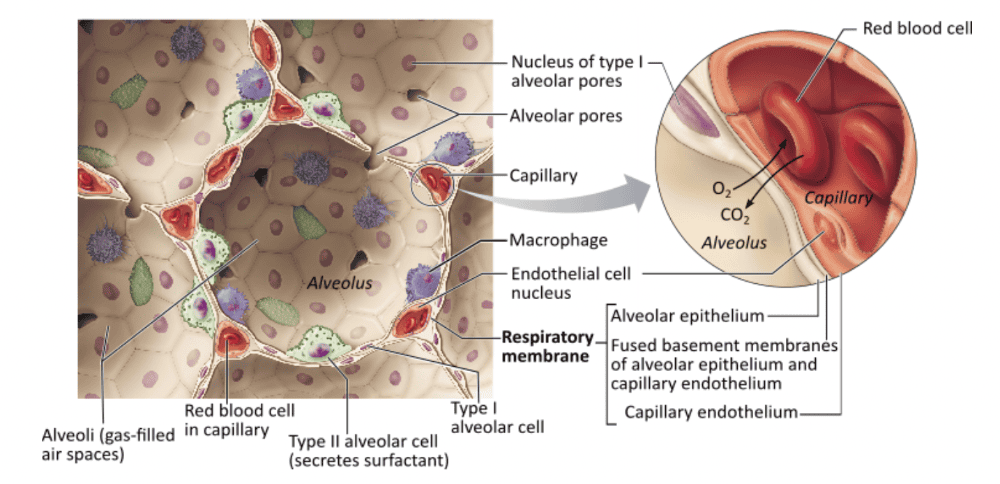
Which of these cells would be most effective in the disposal of inspired microorganisms that may enter the alveoli?
- type I alveolar cells
- lymphocytes in blood circulating through the lungs
- type II alveolar cells
- alveolar macrophages
alveolar macrophages
Ex.
Alveolar macrophages wander freely, ingesting and destroying invading microorganisms or foreign matter.

In children with infant respiratory distress syndrome (IRDS), the walls of the alveoli cling to each other and make them difficult to inflate. It is common in babies born prematurely. What cells in these infants are NOT fully developed and are NOT doing their job?
- alveolar macrophages
- endothelial cells of alveolar capillaries
- type I alveolar cells
- type II alveolar cells
type II alveolar cells
Ex.
Type II alveolar cells secrete a detergent-like surfactant that lessens the surface tension on the alveolar walls, preventing them from sticking to each other. Infants with IRDS can be treated until their cells produce adequate surfactant.

The palatine tonsils are found in which of the following regions?
- nasopharynx
- oropharynx
- larynx
- laryngopharynx
oropharynx
Ex.
The palatine tonsils are found in the part of the pharynx that is shared with the oral cavity and is known as the oropharynx.
The loudness of a person's voice depends on the ________.
- thickness of vestibular folds
- length of the vocal folds
- strength of the intrinsic laryngeal muscles
- force with which air rushes across the vocal folds
force with which air rushes across the vocal folds
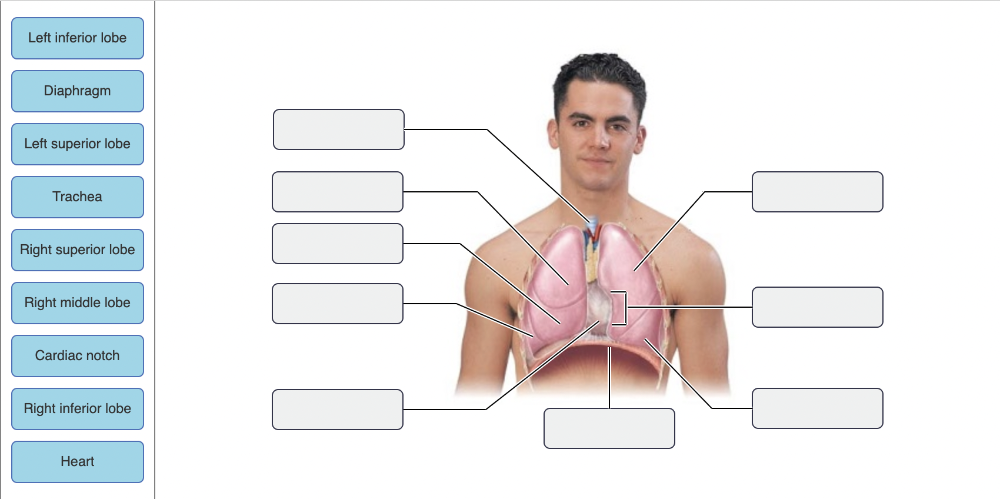
Drag the appropriate labels to their respective targets.
